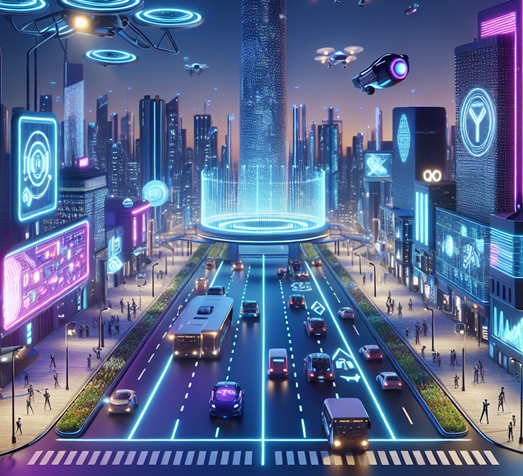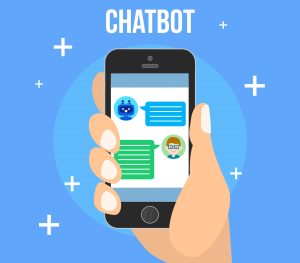In this era of AI Showdown, three contestants have emerged to challenge the status quo: ChatGPT, Bard, and Bing. Who will triumph in this heart-racing showdown? As spectators of this breakthrough, we are privileged to dive deeper into the extraordinary world of these AI pioneers. From understanding conversational language to imitating human-like text, their capabilities boggle the mind and set new frontiers in tech innovation. However, in this fiercely competitive arena, choosing the top contender isn’t as easy as you may imagine. This article, complete with individual AI performance breakdowns, allows you a front-row seat to the spectacle, demystifying the complexities of these AI masterpieces and revealing who truly emerges as the best. One thing is certain – the outcome of this epic showdown is bound to redefine the future of artificial intelligence as we know it. Buckle up for an enlightening and thrilling journey into the cutting-edge realm of AI supremacy!
Diving Deep: Comparing ChatGPT, Google’s Bard, and Microsoft’s Bing AI – Who Reigns Supreme?
Artificial intelligence (AI) is no longer a fabrication of our imagination. Today, it’s a reality that’s quickly changing the way we interact with technology and the world. Three AI entities have emerged as game-changers in this vibrant landscape: OpenAI’s ChatGPT, Google’s Bard, and Microsoft’s Bing. All three aim to revolutionize our approach to information retrieval, communication, and decision-making. But who among them is the best? That’s exactly what we’re going to find out in this article.
Understanding ChatGPT, Bard, and Bing: Key Features
ChatGPT, developed by OpenAI, is a language prediction model that uses machine learning to produce human-like text. It’s designed to understand context, generate creative content, and deliver in a way that’s indistinguishable from a human. It’s capable of tasks like translation, question and answering, and even writing essays.
Google’s Bard, on the other hand, is a “storytelling” AI. Bard generates text based on a series of prompts, creating a narrative that’s coherent and engaging. Unlike other language models, Bard is designed to create long-form content that maintains thematic consistency.
Microsoft’s Bing AI is a multifaceted machine learning model designed to enhance search experiences and provide more accurate, personalized results. Bing uses AI to understand user queries better, predict user needs, and deliver high-quality search results.
Performance comparison: ChatGPT vs. Bard vs. Bing
When it comes to performance, each of these AI models brings something unique to the table. ChatGPT excels in generating creative, contextually accurate content. Its ability to mimic human conversation makes it ideal for applications that require interaction with users, like customer service or tutoring.
Bard, with its storytelling prowess, shines in creating engaging narratives. It can maintain thematic consistency over long passages, making it perfect for content generation tasks. However, it may not be as adept at understanding specific user queries as ChatGPT or Bing.
Bing, being a search-focused AI, excels at understanding and predicting user needs. It’s highly efficient in delivering personalized, relevant search results. However, its performance in generating human-like text can’t match that of ChatGPT or Bard.
The role of AI in real-world scenarios: ChatGPT, Bard, and Bing
AI has transformed various real-world scenarios, and ChatGPT, Bard, and Bing are no exceptions. ChatGPT is used in customer service bots, personal assistants, and tutoring programs. Its ability to understand context and generate human-like responses makes it highly effective in these roles.
Bard’s storytelling ability finds use in content generation tasks like writing articles, scripts, and even books. It’s also used in gaming, where it can create immersive narratives for players.
Bing’s AI is implemented in Microsoft’s search engine to improve search results, predict user needs, and provide personalized suggestions. It’s also used in Microsoft’s other products, like Office and Outlook, to enhance user experiences.
User Experience: ChatGPT, Bard, and Bing
User experience is a crucial factor in assessing these AI models. ChatGPT provides a highly interactive and engaging experience, making users feel like they’re conversing with a human. However, its responses can sometimes be overly verbose, and it may struggle with complex queries.
Bard’s user experience revolves around the engaging narratives it creates. The stories it crafts can be captivating, but they may not always align with specific user inputs. Thus, its effectiveness largely depends on the application.
Bing delivers a user experience centered on efficient information retrieval. It’s adept at understanding user queries and delivering accurate, relevant results. However, its interaction is more transactional and less conversational compared to ChatGPT or Bard.
Training and development: Behind the scenes of ChatGPT, Bard, and Bing
Each of these AI models has undergone rigorous training and development processes. ChatGPT was trained using a dataset of internet texts and uses a model called a transformer to understand and generate text. It’s been through several iterations, each improving upon the last.
Bard, too, was trained using a large dataset of internet text. However, it underwent additional training using reinforcement learning from human feedback, allowing it to generate long, coherent narratives.
Bing’s AI was developed using a variety of machine learning techniques, including deep learning and reinforcement learning. It was trained on vast amounts of data, including search queries, web pages, and user behavior data, allowing it to understand and predict user needs effectively.
Future Predictions: ChatGPT, Bard, and Bing
Looking to the future, it’s clear that these AI models will continue to evolve and impact various sectors. ChatGPT could revolutionize how businesses interact with customers, while Bard could redefine content creation. Bing’s AI could transform how we search for and consume information.
However, these AI models also pose challenges. Issues around misinformation, privacy, and the ethical use of AI are areas that need addressing. As these AI models evolve, it’s essential to have frameworks in place to ensure their responsible use.
Choosing the right AI for you: ChatGPT, Bard or Bing?
Choosing the right AI depends on your needs. If you need an AI that can interact with users and generate creative content, ChatGPT is a solid choice. If you’re looking for an AI that can create engaging narratives, Bard is the way to go. If your focus is on efficient information retrieval and personalized suggestions, Bing’s AI is ideal.
Expert Opinion: What do they say about ChatGPT, Bard, and Bing?
Experts have praised all three AI models for their capabilities. ChatGPT has been lauded for its ability to understand context and generate human-like text. Bard has garnered praise for its storytelling ability and thematic consistency. Bing has been commended for its accuracy and personalized search results.
However, experts also caution against the potential misuse of these AI models. They stress the need for robust ethical guidelines and transparency in the use of AI.
Conclusion
In the grand showdown of AI supremacy, it’s clear that ChatGPT, Bard, and Bing each have their strengths and applications. They are all trailblazers, redefining the boundaries of what AI can do. However, choosing a winner isn’t as straightforward. The best AI depends on the specific needs and applications at hand.
One thing is certain, though: AI is here to stay, and it will continue to shape our future in ways we can only begin to imagine. As we witness this exciting evolution, it’s essential to embrace these advancements while also being mindful of the ethical implications they bring. Let’s look forward to a future where AI enhances our experiences and makes our lives easier, all while respecting our values and rights.















